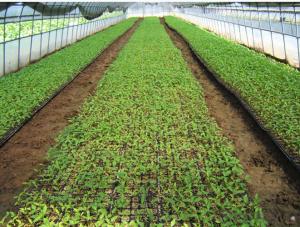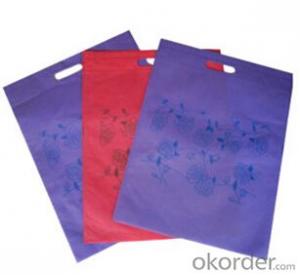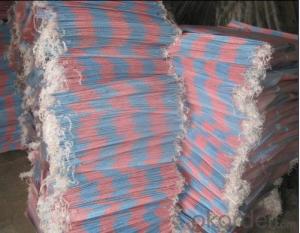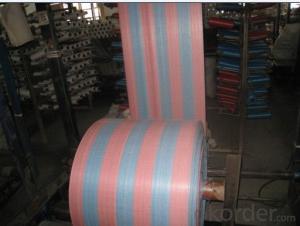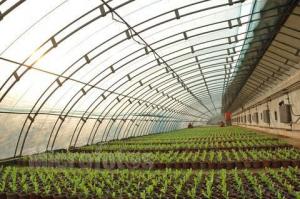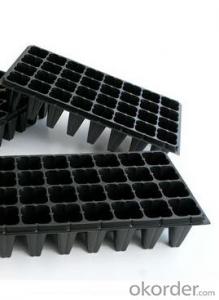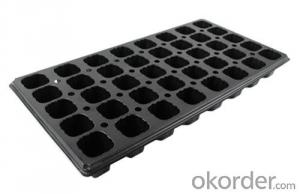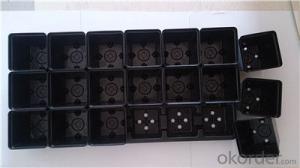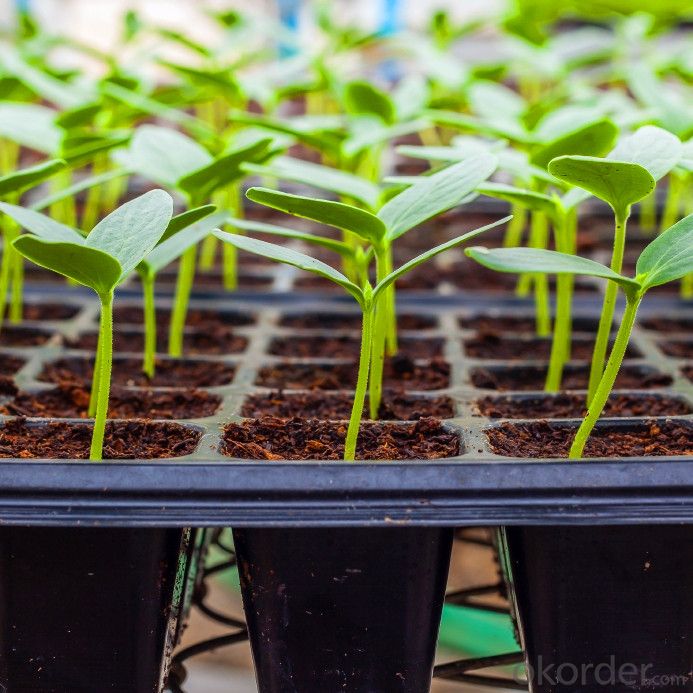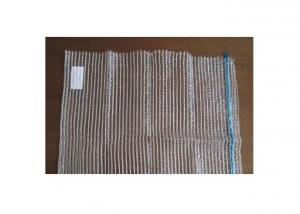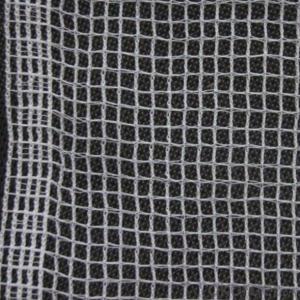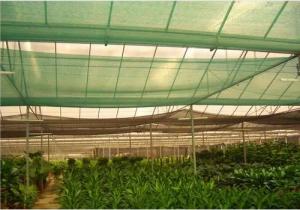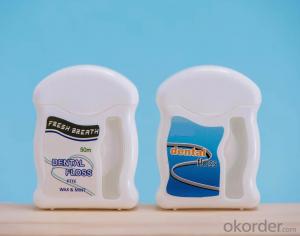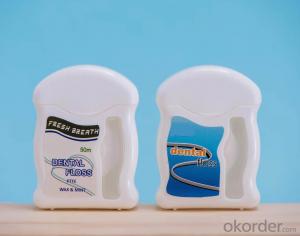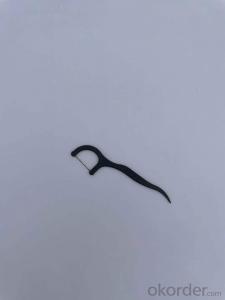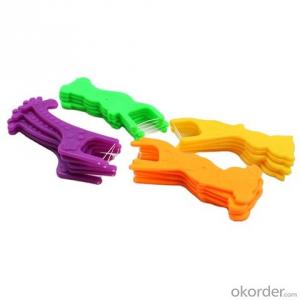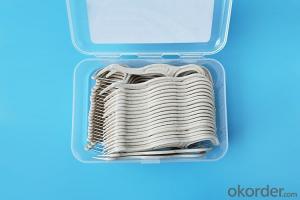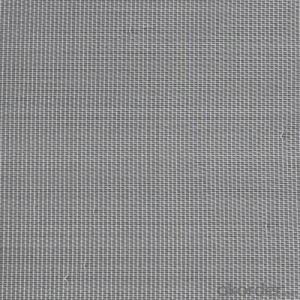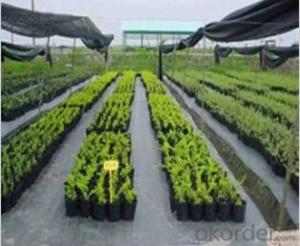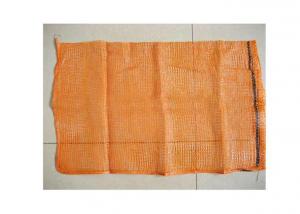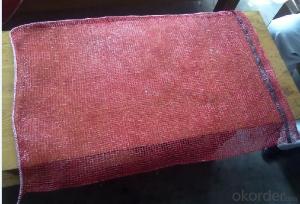Hydroponic Seedling Planting Plastic Seeding Tray for Greenhouse
- Loading Port:
- China main port
- Payment Terms:
- TT OR LC
- Min Order Qty:
- 1000 pc
- Supply Capability:
- 10000000 pc/month
OKorder Service Pledge
OKorder Financial Service
You Might Also Like
Structure of the seed tray: · Top quality and competitive price. · Variety design and good appearance. · Easy to use, and remove. · Durable and reusable. · Eco-Friendly.
Advantages: · Top quality and competitive price. · Variety design and good appearance. · Easy to use, and remove. · Durable and reusable. · Eco-Friendly.
Application: · Ideal for Starting seeds and Transplanting Seedling. · Suitable for both manual and automatic planting. · Suitable for Propagating Vegetables, Flowers and other plant from seed · in green-house or indoors.
Description Main Features of the seed tray: · Ideal for Starting seeds and Transplanting Seedling. · Suitable for both manual and automatic planting. · Suitable for Propagating Vegetables, Flowers and other plant from seed in green-house or indoors. Using time: · thickness of 0.5mm can be used 1 to 2 times. · thickness of 0.6mm can be used 3 to 4 times. · thickness of 0.7mm can be used 5 to 6 times. · thickness of 0.8mm can be used 7 to 8 times. · thickness of 0.9mm can be used 8 to 9 times. · thickness of 1.0mm can be used 8 to 10 times. Thickness vs. Weight: · Thickness of trays are from 0.5mm to 1.0mm. · 1.0mm: 155g±5g; 100pcs/ctn. · 0.9mm: 140g±5g; 120pcs/ctn. · 0.7mm: 110g±5g; 150pcs/ctn. · 0.6mm: 95g±5g; 180pcs/ctn. · 0.5mm: 80g±5g; 200pcs/ctn.
Seed Tray Specification: Materialps/pvcThickness0.5mm-1.5mm, standard:1mmWeight80g(±5)g-230g(±5)g, Standard weight:155g(±5)gSizelength:490mm-540mm, width:190mm-345mm,depth:25mm-150mm Standard:54mmX28mmCell count18-512Packagein cartonUsing time8-10 times
FAQ: Q:How Can I Get A Sample? A:You can get samples by communicate with our export sales. Q:How Long Is Delivery? A:Delivery time will be 7-25 days according to order quantity. Q:What Is The MOQ? A:Our MOQ is 1*20FT container quantity, allow to mix several items. Q:What Is Our Normal Payments Terms? A:Our normal payment terms now is T/T, L/C or Western Union,Papal. Q:How Do I Order Your Products? A:You can check our website for any items you interest and you can also get communication with our export sales and order for it accordingly. Q:What Kinds Of Material We Use In Our Product? A:Our plastic flower pots use material such as PP polymer or PE polymer.
|
- Q:I nicked my wrist on some sharp plastic in my car, bled for a second but i immediately put disinfectant on it about 2 minutes after. I'm 20 and don't know about my last tetanus shot but do I need one? Really hate needles and it was plastic. Freaking out a bit so any help would be great!
- glass... pros ? rarely reacts with its contents ? can be heated to moderately high temps ? can be cleaned of all organics for reuse by heating above 600 C glass... cons ? cost ? designed to be reusable (you have to spend time and effort washing) ? breakable ? storage (not stackable) plastic... pros ? cheap ? designed for 1 use. less possibility for cross contamination ? durable ? stackable... less lab space ? do not require cleaning ? RARELY react with contents. plastic... cons ? may generate static charge which may effect balance readings ? heatable to low temps only. ************ In practice, in labs that I manage, we use plastic unless we need to heat something. Then we use glass.
- Q:Are there any environmental concerns associated with using agricultural plastic products?
- Yes, there are several environmental concerns associated with using agricultural plastic products. These concerns include the generation of plastic waste that is difficult to recycle, the release of harmful chemicals during production and disposal, the pollution of water bodies when plastic products are not properly managed, and the contribution to greenhouse gas emissions during the manufacturing process. Additionally, the improper disposal of agricultural plastics can harm wildlife and ecosystems.
- Q:Can ground cover be used to create a tropical garden?
- Yes, ground cover can definitely be used to create a tropical garden. Ground cover plants such as ferns, mosses, and low-growing tropical flowers can help create a lush and dense carpet-like effect in a garden, mimicking the dense foliage found in tropical regions. These plants not only provide a beautiful and vibrant look but also help to retain moisture in the soil and suppress weed growth. Additionally, they can act as a natural mulch, keeping the soil cool and preventing erosion. Overall, ground cover can be an excellent addition to a tropical garden, adding texture, color, and a sense of authenticity.
- Q:How do agricultural plastic products assist with irrigation?
- Agricultural plastic products assist with irrigation by providing efficient water management solutions. They are used to create irrigation channels, pipes, and hoses that deliver water directly to the plants' root systems. These products help in reducing water wastage, preventing soil erosion, and ensuring the proper distribution of water to crops, resulting in improved crop yields and water conservation.
- Q:im getting my bellybutton professionally pierced soon and i was just wondering whats the difference between the metal rings and the plastic bendy ones witch one is better and why? also witch one will have a higher risk of the piercing getting infected? also should i stay away from the cheap belly rings cause they could get it infected? thankss
- The plastic bendy ones are for when you're pregnant and if you're getting it done, get metal
- Q:What are some ground cover options for a formal garden?
- Some ground cover options for a formal garden could include boxwood, creeping thyme, mondo grass, or dwarf mondo grass.
- Q:How do ground cover plants help prevent erosion?
- Ground cover plants help prevent erosion in several ways. Firstly, their roots bind the soil together, creating a dense network that holds the soil in place, preventing it from being washed away by rain or wind. Additionally, ground cover plants act as a barrier, breaking the impact of rainfall and reducing the force that would otherwise directly hit the soil surface. They also help to absorb and retain water, reducing surface runoff and allowing the water to infiltrate into the soil, which further prevents erosion. Overall, the presence of ground cover plants helps to stabilize the soil and protect it from erosion caused by natural elements.
- Q:Can ground cover plants be used to create a low-maintenance landscape?
- Yes, ground cover plants can be used to create a low-maintenance landscape. Ground cover plants typically require less water, fertilizer, and pruning compared to traditional lawns or large shrubs. They also help suppress weed growth, reducing the need for manual weeding or herbicides. Additionally, ground cover plants can provide erosion control and add aesthetic appeal to the landscape.
- Q:Can ground cover be used in both sunny and shady areas?
- Yes, ground cover can be used in both sunny and shady areas. There are different types of ground cover plants that are suitable for various light conditions. Some ground cover plants thrive in full sun, while others prefer shade or can tolerate a mix of sun and shade. It is important to choose the appropriate ground cover plants based on the amount of sunlight the specific area receives.
- Q:How do you propagate ground cover plants?
- Ground cover plants can be propagated through various methods such as division, stem cuttings, layering, and seed sowing. Division involves separating clumps of the plant into smaller sections and replanting them. Stem cuttings can be taken from healthy plants and rooted in a suitable growing medium. Layering involves bending a low-growing stem of the plant to the ground, covering it with soil, and allowing it to grow roots before separating it from the parent plant. Lastly, some ground cover plants can be propagated from seeds, which need to be sown in a seed tray or directly in the ground and cared for until they germinate and grow into new plants.
1. Manufacturer Overview |
|
|---|---|
| Location | |
| Year Established | |
| Annual Output Value | |
| Main Markets | |
| Company Certifications | |
2. Manufacturer Certificates |
|
|---|---|
| a) Certification Name | |
| Range | |
| Reference | |
| Validity Period | |
3. Manufacturer Capability |
|
|---|---|
| a)Trade Capacity | |
| Nearest Port | |
| Export Percentage | |
| No.of Employees in Trade Department | |
| Language Spoken: | |
| b)Factory Information | |
| Factory Size: | |
| No. of Production Lines | |
| Contract Manufacturing | |
| Product Price Range | |
Send your message to us
Hydroponic Seedling Planting Plastic Seeding Tray for Greenhouse
- Loading Port:
- China main port
- Payment Terms:
- TT OR LC
- Min Order Qty:
- 1000 pc
- Supply Capability:
- 10000000 pc/month
OKorder Service Pledge
OKorder Financial Service
Similar products
New products
Hot products
Hot Searches
Related keywords



